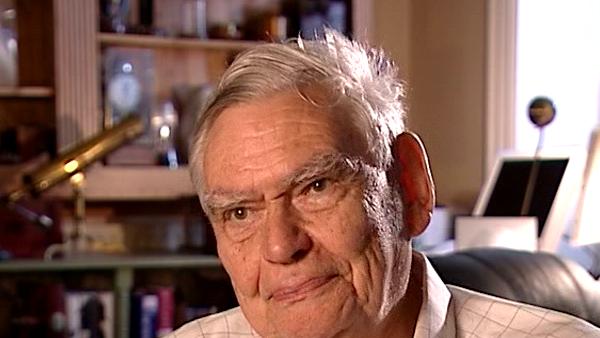NEXT STORY

My early work at the Applied Psychology Unit in Cambridge
RELATED STORIES

NEXT STORY

My early work at the Applied Psychology Unit in Cambridge
RELATED STORIES


|
Views | Duration | |
|---|---|---|---|
| 11. Memory | 135 | 02:06 | |
| 12. My early work at the Applied Psychology Unit in Cambridge | 99 | 04:52 | |
| 13. I helped redesign submarine escapes | 115 | 05:21 | |
| 14. Torpedo practice and brass portholes in the wardroom | 84 | 01:56 | |
| 15. Working on neural noise at the Applied Psychology Unit | 82 | 04:49 | |
| 16. Why I got into psychology | 121 | 03:59 | |
| 17. Trying to set up a brain unit and moving to Edinburgh | 81 | 07:17 | |
| 18. Work at the Brain and Perception lab in Bristol | 127 | 06:21 | |
| 19. The case of Sidney Bradford | 894 | 06:09 | |
| 20. The Exploratory | 89 | 03:30 |


The late British psychologist and Emeritus Professor of Neuropsychology at the University of Bristol, Richard Gregory (1923-2010), is well known for his work on perception, the psychology of seeing and his love of puns. In 1978 he founded The Exploratory, an applied science centre in Bristol – the first of its kind in the UK. He also designed and directed the Special Senses Laboratory at Cambridge which worked on the perceptual problems of astronauts, and published many books including 'The Oxford Companion to the Mind', 'Eye and Brain' and 'Mind in Science'.
Title: Memory
Listeners: Sally Duensing Adam Hart-Davis
Sally Duensing currently is involved in perception exhibition work and research on science and society dialogue programmes and is working with informal learning research graduate students and post-docs at King's College, London. In 2000 she held the Collier Chair, a one-year invited professorship in the Public Understanding of Science at the University of Bristol, England. Prior to this, for over 20 years she was at the Exploratorium, a highly interactive museum of science, art and perception in San Francisco where she directed a variety of exhibition projects primarily in fields of perception and cognition including a large exhibition on biological, cognitive and cultural aspects of human memory.
Born on 4 July 1943, Adam Hart-Davis is a freelance photographer, writer, and broadcaster. He has won various awards for both television and radio. Before presenting, Adam spent 5 years in publishing and 17 years at Yorkshire Television, as researcher and then producer of such series as Scientific Eye and Arthur C Clarke's World of Strange Powers. He has read several books, and written about 25. His latest books are Why does a ball bounce?, Taking the piss, Just another day, and The cosmos: a beginner's guide. He has written numerous newspaper and magazine articles. He is a keen supporter of the charities WaterAid, Practical Action, Sustrans, and the Joliba Trust. A Companion of the Institution of Lighting Engineers, an Honorary Member of the British Toilet Association, an Honorary Fellow of the Royal Photographic Society, the Royal Society of Chemistry, the Society of Dyers and Colourists, and Merton College Oxford, and patron of a dozen charitable organizations, Adam has collected thirteen honorary doctorates, The Horace Hockley Award from the Institute of Scientific and Technical Communicators, a Medal from the Royal Academy of Engineering, the Sir Henry Royce Memorial Medal from the Institute of Incorporated Engineers, and the 1999 Gerald Frewer memorial trophy of the Council of Engineering Designers. He has no car, but three cycles, which he rides slowly but with enthusiasm.
Duration: 2 minutes, 6 seconds
Date story recorded: June 2006
Date story went live: 02 June 2008